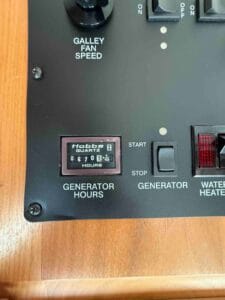If you’re an RV owner eyeing the market, 2025 might just be your golden window to cash in. The recreational vehicle industry is navigating a fascinating pivot: new RV shipments are stabilizing or even dipping in some segments, while demand for used models remains robust, driven by budget-conscious buyers grappling with economic pressures like inflation, high interest rates, and fluctuating fuel costs. According to the latest data from the RV Industry Association (RVIA), June 2025 saw 29,332 wholesale RV shipments, marking a 15.9% increase from June 2024, but the year-to-date total stands at 190,705 units, reflecting mixed growth.

This uptick is largely in towables, up 6.7% year-over-year, while motorhomes dipped 6.1%, leading to an overall 5.3% rise in total shipments. However, new RV sales are down 8.6% year-to-date through May, pushing more consumers toward the used market where values are holding steady or even appreciating in select categories.
Why does this matter for sellers? Simple: supply constraints from the pandemic era are still rippling through. Fewer new RVs mean buyers are turning to pre-owned options, often willing to pay a premium for well-maintained rigs. Think about it—three years ago, leasing and production slowdowns created a shortage that’s now hitting the used market hard. Similar to the auto industry, where 3-year-old used vehicles saw prices rise 3.3% year-over-year due to tight supply, RV owners with models from 2022 or earlier could see elevated valuations. Economic factors amplify this: with auto loan delinquencies at record highsautos.yahoo.com and luxury buyers still spending while mass-market folks shift to affordable alternatives, used RVs offer a sweet spot for families seeking adventure without breaking the bank.
As we head into Q3 2025, forecasts suggest total shipments could hit 337,000 to 350,100 units for the year, a slight 1-5% increase over 2024, but with new prices potentially rising 5-7% due to inflation. This creates urgency for sellers: offload now before potential inventory builds or economic shifts soften demand. In this post, we’ll dive into the data, provide actionable selling tips, share real-world stories, and look ahead to help you maximize your payout. Whether you have a travel trailer, fifth-wheel, or Class C motorhome, understanding this shift could mean thousands more in your pocket. Check out our home page for more RV resources or our about page to learn how A1 RV Buyer can assist with your sale.
Section 1: Market Analysis – Understanding the Data Behind the Used RV Surge
<img src=”placeholder-market-chart.jpg” alt=”Bar graph showing 2025 RV shipment trends: new vs. used sales comparisons over the past year.” style=”width:100%; height:auto; margin-bottom:20px;”>
To grasp why 2025 is seller-friendly for used RVs, let’s break down the numbers. The RVIA’s monthly reports paint a clear picture of a bifurcated market: new RVs are facing headwinds, while used ones benefit from pent-up demand and limited supply. For June 2025, total shipments reached 29,332 units, up from 25,300 in June 2024, with towables leading the charge at a 6.7% increase. Year-to-date through June, shipments total 190,705, a 10.9% rise from the same period in 2024, but this growth masks underlying weaknesses in new sales. New RV retail sales dropped 8.6% year-to-date through May, per industry trackers, as buyers balk at higher prices—average new RV costs have climbed due to material inflation and supply chain residuals.
Used RV sales, however, are holding steady or declining only modestly (down 8.61% YoY in May), indicating resilience amid economic uncertainty. This stability stems from a supply crunch: pandemic disruptions reduced production in 2020-2022, leading to fewer off-lease or trade-in RVs entering the market now. Echoing the broader vehicle sector, where off-lease cars are down 23% this year and won’t recover until 2027, RV inventory for 3-5-year-old models is tight. Black Book‘s Q2 2025 update notes a 15.8% shipment increase in March, but overall, the market favors sellers of quality used rigs, with valuations for popular models like Airstreams or Winnebagos holding or rising 3-5% in select cases.
Economic factors play a starring role. Interest rates remain elevated, making new RV financing costlier—average rates hover at 7-9% for new purchases versus 5-7% for used, per consumer reports. Gas prices, down about 10% YoY nationally but varying by region, push buyers toward fuel-efficient used towables. Meanwhile, wage growth outpacing inflation for many hasn’t trickled down evenly; delinquency rates on auto loans (a proxy for RV financing) are at highsautos.yahoo.com, forcing budget shifts. This dynamic boosts used demand: compact and midsize RVs are gaining market share, similar to how Toyota RAV4 outsold Ford F-150 recently.
Forecasts for Q3/Q4 2025 predict shipments between 320,400-353,500 units annually, with a median of 337,000—a 1% bump over 2024. But with new inventory at 30-141 days’ supply depending on type, dealers are incentivizing trades, creating opportunities for direct sellers. If tariffs or policy changes (e.g., under new administrations) inflate new prices further, used values could appreciate 5-7% annually. In short, the data screams “sell now” for pre-owned owners—before potential oversupply or economic softening erodes your edge.
Section 2: Seller Guide – Prep Tips, Pricing Strategies, and Common Pitfalls

Preparation Tips
Armed with market insights, let’s turn to practical advice: how to sell your used RV for maximum value in 2025. First, assess your rig’s condition. Start with a professional inspection—focus on mechanicals like engines, brakes, and roofs, as buyers prioritize reliability. Clean thoroughly; a spotless interior can add 5-10% to offers. Document maintenance records; in a market where used vehicles depreciate 15-25% annually but well-kept ones hold better, proof of care is gold.
Pricing Strategies
Pricing is key. Use tools like NADA Guides or Black Book for baselines—factor in mileage, age, and features. For example, a 2022 travel trailer might fetch 50-70% of original value if under 10,000 miles, versus 40% for high-mileage units. In 2025’s tight supply, aim 5-10% above average if your RV has upgrades like solar panels or updated interiors, as eco-features boost resale by 15%. Monitor local trends: in high-demand areas like the Midwest or Southwest, prices hold firmer due to camping booms.
Common Pitfalls and Strategies
Strategies for selling: List on platforms like RV Trader, Craigslist, or Facebook Marketplace for broad reach. Highlight low depreciation—e.g., “Holds 40-50% value after 5 years, per industry data.” Time it right: July-August 2025 is peak, with financial windows like July 26-August 11 for max payouts. Avoid pitfalls like overpricing (scares buyers) or skipping disclosures (leads to disputes). Negotiate smartly—offer bundles like accessories to sweeten deals. If you’re aiming for a hassle-free process, consider getting a quick quote from buyers like those at a1rvbuyer.com to see your rig’s current market value without the listing hassle.
For direct buyers like services that purchase outright, emphasize quick, hassle-free sales. If trading in, note dealers’ hunger for inventory amid new slowdowns. Finally, consider taxes and fees—selling privately nets more but requires effort. With these steps, you could net 10-20% more than last year.
Section 3: Real Seller Stories and Q4 Forecasts

Real Seller Stories
Real experiences bring the data to life. One seller on Reddit shared their journey with a 2022 travel trailer: after listing it across multiple platforms and highlighting recent upgrades like new tires and solar panels, they sold it for 15% above initial offers, despite initial slow interest due to market saturation. “It took patience, but emphasizing the maintenance records sealed the deal,” they noted. Another anonymized account from X described a family who quit full-time RVing after persistent mechanical issues with their Class C motorhome; they sold it quickly in the hot used market, recouping most costs and transitioning back to a fixed home. “The breakdowns were endless, but the demand for used rigs made selling easy,” they reflected. A third story involved a couple who sold their small farm and temporarily lived in their RV to become debt-free; after a few months, they sold the rig at a premium due to its low mileage and pristine condition, using the proceeds toward a new property.
Q4 Forecasts
Forecasts for Q4: Shipments may stabilize at around 337,000 units total for the year, but used demand could rise if new prices inflate. Specific types like towable RVs (e.g., travel trailers and fifth-wheels) are projected to see continued strong demand, potentially holding or appreciating values by 3-5% due to their 4.8% shipment growth, while motorhomes might experience moderate gains of up to 5.5% if economic recovery holds. Folding camping trailers and truck campers could see softer depreciation if seasonal patterns persist, but overall, economic hesitation might soften prices slightly for high-end models, per industry insights on used markets.
Conclusion: Ready to Sell? Get Your Free Valuation Today
The 2025 used RV shift favors sellers—don’t miss it. With data showing steady values and strong demand, now’s the time to act. Visit a1rvbuyer.com home for more tips, or head to our quote page for a no-obligation valuation and turn your rig into cash hassle-free. Stay tuned for more in our 2025 RV Market Insights series, including posts on sustainable upgrades and financing strategies.









